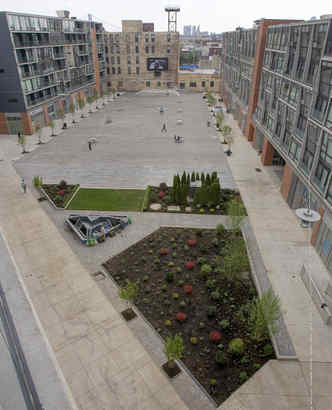
High speed rail has been studied to death in Canada (as well as the US from what I've read) and yet there is not a single truly high speed rail line on the continent. Amtrak's Acela doesn't count in my books, because it is plagued by delays and sub-par infrastructure along it's route between Boston and Washington, DC. Theoretically, the Acela trainsets can reach an astonishing 322km/h (200mph), but due to the tracks and having to share with freight traffic, trains are limited to a maximum of 240km/h and in some sections can't travel at more than 200km/h. Overall, the average speed on an Acela trip: a sad 138km/h. Compare this to the speed record for conventional rail trains (rather than MagLev) that is currently held by France's TGV of an incredible 574.8km/h! You can see why I find it hard to call Acela "hish speed".
What's frustrating is that nearly every study that has been done, including all recent studies (say the past decade or so) say that Canada is ready for high speed rail in 3 corrdiors:
1. Quebec City-Montreal-Ottawa-Toronto-Windsor-(Detroit)
2. Calgary-Red Deer-Edmonton
3. Vancouver-Seattle-Portland
Having taken the train several times between Montreal and Toronto (which like the Acela line is rarely on time) and in a few places in Europe, I can say that it is 100 times better than flying between two cities. Heck, departing on a flight from Edmonton, you have to drive so far south to get to the airport that you may as well just keep on going to Calgary...which is what most people do.
Here are the main reasons I'm a huge fan of high speed rail:
1. It's faster. For example, Edmonton to Calgary is a 3 hour drive on a boring and very busy highway - add at least half an hour for travel by bus. A flight is only 45 minutes, but add to that checking-in an hour in advance, a 30-45 minute drive to the Edmonton Airport and 20-30 minutes from Calgary airport and you're easily over 3 hours. Compare that to a train traveling at a realistic 300km/h from downtown to downtown and you'd be there in just over an hour.
2. It's way more comfortable. Wide seats, tons of legroom, a smooth, quiet ride, no restrictions on when you can have your laptop out, cell phone reception (which I'll admit, at times isn't a good thing), the ability to get up and walk around whenever you want, real-sized bathrooms...I could go on forever. I'm not a huge Via Rail fan, but they got it right: "A more human way to travel." Also, it's been proven that a huge percentage of the general population will gladly take a train if it's available, but not a bus - you can count me on that list.
3. Zero emissions. Of course, only if it's planned for - but high speed rail is powered by electricity, which can come from solar, wind and hydro, emitting zero emissions. It's going to be a long time before we have a zero emissions jet (if ever).
4. Greater capacity in a smaller footprint. A high speed rail corridor with one track in each direction can easily handle 12,000 passengers per hour, each way, (and with higher speeds and double-decker trains that can reach 20,000). A single lane of highway is designed for a maximum of about 2250 cars/hour. What this comes down to is that a typical 6-lane highway has 13% less capacity than a standard rail system and takes up 2.5 times the land area!
5. It's friggen cool! Okay, I know this isn't quantifiable, but I guarantee that once you ride a high speed train, you'll be sold on it. Rocketing along the rails at incredible speeds and yet still being able to sit back and look at the scenery is one of the best experiences I've ever had.
For a great overview of high speed rail and even more stats, go to:
http://en.wikipedia.org/wiki/High-speed_rail
So if high speed rail is so great, why hasn't it been built here? Well, quite simply: cost. There is no question that high speed rail, while comparatively cheap to operate, has a very high initial cost and therefore must have government involvement. Many oppose the construction of high speed rail because they feel it is giving the rail line a competitive advantage to air and road travel and that taxes shouldn't be spent on such a "subsidy". But I think they forget where our airports and roads came from - our taxes. The airline and bus industries have already been subsidized for decades. The cost to build the 6-lane highway mentioned earlier through a mostly rural area is in the range of $12 million to $34 million per km (a huge range because so much depends on the location and geography of the route). The cost for the most recent high speed rail line in France (Paris-Strasbourg) came to $15.1 million per km, hardly out of touch with the comparable highway cost. Then there's the maintenance costs; the asphalt on this 6-lane highway will last a maximum of 15 years in Canada before repaving is required (at a cost of $200,000 per km), whereas the rail line is deisgned to last 100 years with minimal maintenance.
There are a ton of studies, reports and proposals out there, so it's hard to nail down which numbers are right. But overall, high speed rail wins without question. It may be an expensive investment, but it's one that will last for decades and brings big societal and environmental gains with it.
Recommended Reading:
California High Speed Rail Authority
Stop This Train!
By Tom Vanderbilt
Are trains slower now than they were in the 1920s?
(The answer is yes)
High Speed Rail in Canada




